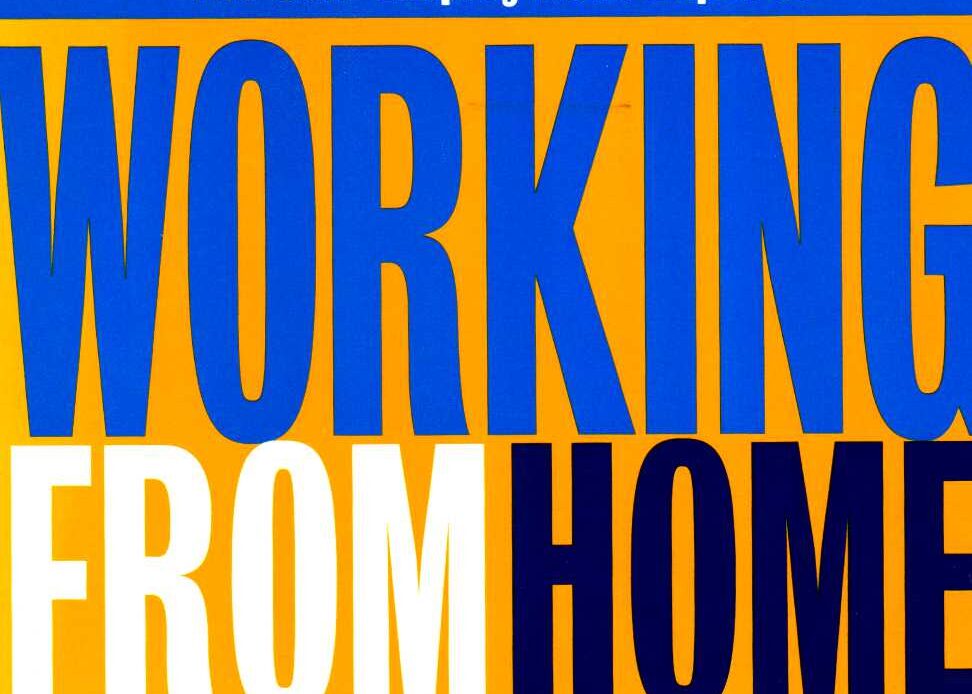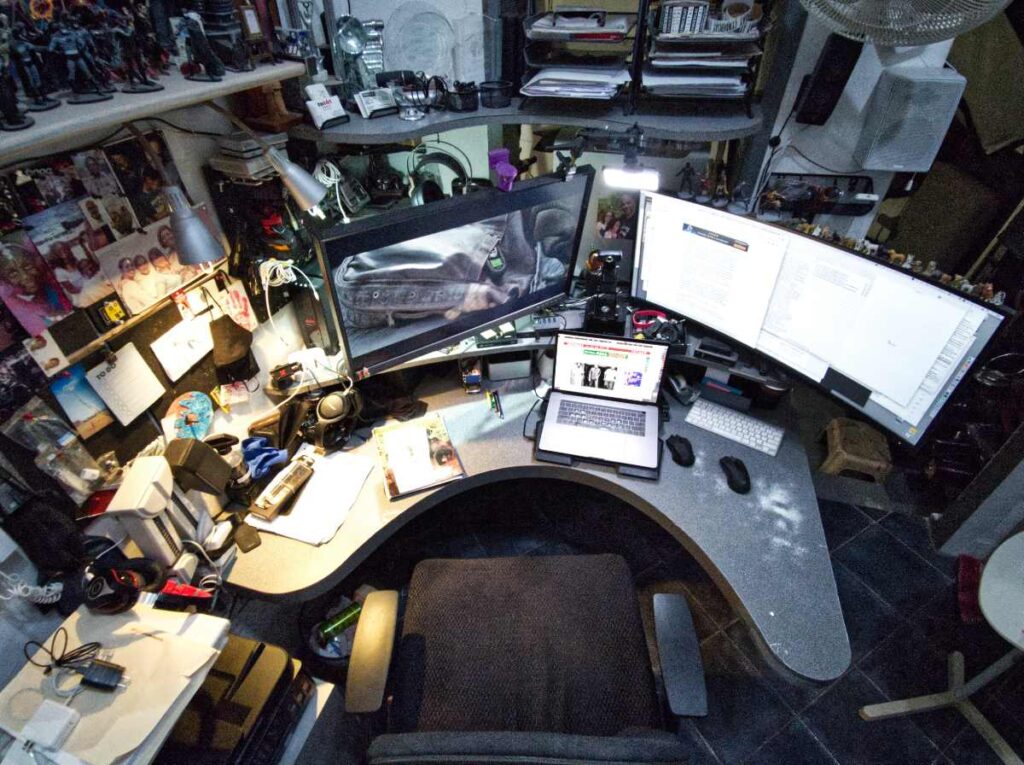
Above: The cover of Paul and Sarah Edwards’ 1994 book Working from Home.
BitDepth#1283 for January 07, 2020
Tidying old bookshelves, I discovered a reminder of why working from home on the scale we’ve been doing it since March would have been impossible a decade or more ago.
I found the writing of Paul and Sarah Edwards in Home Office Computing, a magazine I subscribed to in the nineties which moved me to eventually buy the fifth edition of their mammoth book, Working from Home.
It stands now as a monument to how hard creating a functional office at home used to be.
Setting aside the early, contemplative chapters, which urge cross-examination of the reader’s reasons for setting up a home office, the authors soon get to business with worksheets and charts meant to guide planning as well as sharply considered advice, such as “you cannot have business visitors to your home if you have a snapping dog.”
Personally, I like testing the resolve of visitors to my home office but haven’t found a dog necessary when snippy sarcasm usually scares away the minnows.
It probably isn’t fair to judge the WFH environment of 1994 with 2021. The former was about self-empowerment, today, it’s all about survival.
And yet, some of the advice still holds true.
Planning your space and the furniture you need is still a sensible way to start relocating business into a home space, and it’s even easier to do in this century.
Having a fax available alongside a fully digital communication tool made it possible to appreciate the difference between transmitting live data and a picture of it.
When I embarked on my home office planning in the 1990’s I couldn’t wait on dial-up connections to display a page of photos.
It was cheaper and a whole lot less frustrating to just order a raft of books full of home office ideas off Amazon. Now, we have Pinterest.
It’s also hard to describe just how much of a revolution that dial-up connection was.
Starting with fax modems from the now defunct Global Village, this home office steadily upgraded from 2400 baud to 56k connections as the landscape of gray pages crept less slothfully into view.
Having a fax available alongside a fully digital communication tool was the leveraging point of change we didn’t see at the time.
For the first time it became possible to appreciate the difference between transmitting live data and a picture of it, and that pushed change along even faster.
In the Edwards book, the flicker rate of old tube monitors was a real concern. Cordless phones were still very much a luxury, and cell phones were available for the truly upscale home office worker who also had to be on the move.
The heavy bulky units were preferable putting out more wattage for serious use. The small expensive versions were for ninnies who were more into show than making stable connections on their calls.
A helpful checklist in the book guided unwary purchasers on the key points to consider when buying an answering machine.
Not included? The requirement to declare the device to the Trinidad and Tobago authorities.
Also, nowhere in the book is there a recommended response to the puzzled looks on the faces of Trinidad public service officers who had never had anyone actually obey the law requiring clearance for the use of answering machines in this country.
Computer users were sagely advised to look for processors delivering a clock speed of at least 200MHz with a minimum of 16 MB of RAM.
The use of a daily planner was highly recommended, a habit that lives on with my insistence on ending each day by listing the tasks for tomorrow while taking a particular delight in running a line through the work I completed today.
I still have a DayRunner system, though I haven’t bought a refill in decades. The company and its products remain in business.
There’s still a sense of melancholy loss seeing the Edwards offer the upcoming Microsoft Office as an alternative to the market commanding Lotus SmartSuite and Corel Professional Office.
Chapter 17, Avoiding Loneliness, is particlarly poignant, recalling an era in which the book’s reader would be so engrossed with work that they simply forgot to have normal relationships.
Compuserve and AOL were offered as possible ways to connect with like minds. The world virtually doesn’t appear anywhere in the book, but the looming threat of snacking demanded several paragraphs. That’s foresight.
By the end of the 664-page book, the enormity of the change since its 1994 publication is clear, but there are core truths to be found in its pages.
Technology may have enabled more powerful connectivity from the home, but it hasn’t solved the essential disconnect, and confusion that comes with remote working, particularly in workplaces that are still very much attached to management by sight, not measurement of production.



